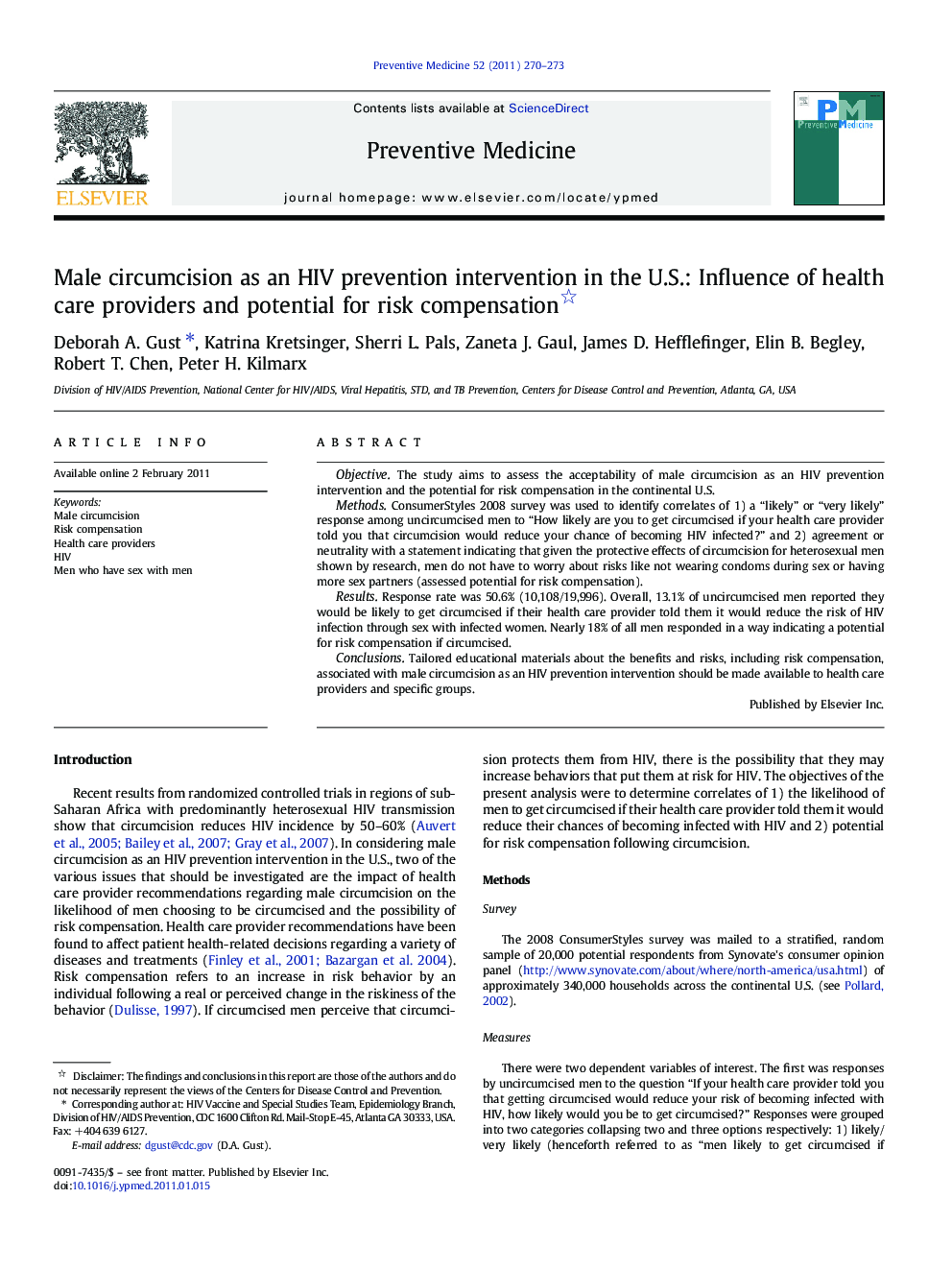| Article ID | Journal | Published Year | Pages | File Type |
|---|---|---|---|---|
| 3100810 | Preventive Medicine | 2011 | 4 Pages |
Objective.The study aims to assess the acceptability of male circumcision as an HIV prevention intervention and the potential for risk compensation in the continental U.S.Methods.ConsumerStyles 2008 survey was used to identify correlates of 1) a “likely” or “very likely” response among uncircumcised men to “How likely are you to get circumcised if your health care provider told you that circumcision would reduce your chance of becoming HIV infected?” and 2) agreement or neutrality with a statement indicating that given the protective effects of circumcision for heterosexual men shown by research, men do not have to worry about risks like not wearing condoms during sex or having more sex partners (assessed potential for risk compensation).Results.Response rate was 50.6% (10,108/19,996). Overall, 13.1% of uncircumcised men reported they would be likely to get circumcised if their health care provider told them it would reduce the risk of HIV infection through sex with infected women. Nearly 18% of all men responded in a way indicating a potential for risk compensation if circumcised.Conclusions.Tailored educational materials about the benefits and risks, including risk compensation, associated with male circumcision as an HIV prevention intervention should be made available to health care providers and specific groups.
